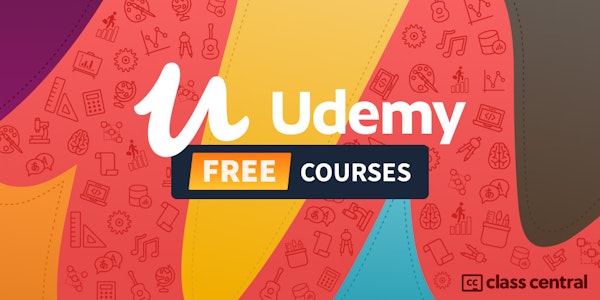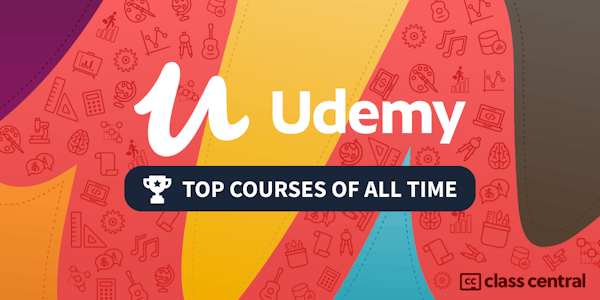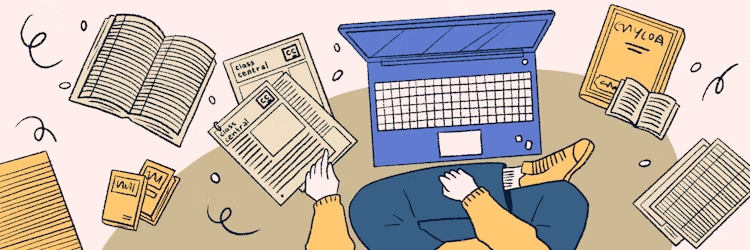What you'll learn:
- Build simple circuits around the Arduino Uno, that implement simple functions.
- Write simple Arduino sketches that can get sensor reading, make LEDs blink, write text on an LCD screen, read the position of a potentiometer, and much more.
- Understand what is the Arduino.
- Understand what is prototyping.
- Understand analog and digital inputs and outputs
- Understand the ways by which the Arduino can communicate with other devices
- Use the multimeter to measure voltage, current, resistance and continuity
- Use protoboards to make projects permanent
- be productive with the Arduino IDE, write, compile and upload sketches, install libraries
- Understand what is Arduino programming, it's basic concepts, structures, and keywords
- Detect and measure visible light, color, and ultraviolet light
- Measure temperature, humidity and acceleration
- Measure the distance between the sensor and an object in front of it
- Detect a person entering a room
- Detect a noise
- Make noise and play music
- Display text on a liquid crystal display
- Learn about the Arduino IDE 2.0 and the Arduino Web Editor
Course last updated in December 2024
I have updated Arduino Step by Step Getting Started with an exciting new section on using online Arduino simulators to accelerate your learning and development. These tools allow you to design, test, and debug Arduino projects without physical hardware, saving time and resources. The new lectures introduce two powerful simulation platforms: Wokwi and Tinkercad. They provide detailed examples and hands-on exercises to help you get started.
The new section features a variety of practical examples, including simple LED blink and fade circuits, projects using potentiometers and digital sensors like the DHT22 and HC-SR04 ultrasonic sensor, and more advanced setups incorporating I2C LCDs and servos. Each example is demonstrated in both Wokwi and Tinkercad, allowing you to compare the capabilities of these platforms and choose the one that best fits your needs. Whether you’re a beginner or looking for a way to prototype your ideas faster, these new lectures make exploring and experimenting with Arduino projects easier than ever.
Course updated in August 2024
I have updated this course with a new section covering the new Arduino Uno R4 Minima. This new Model offers a powerful and cost-effective upgrade over the classic R3. It has a faster processor and more memory, perfect for advanced projects with a compact form factor.
If you are interested in the Arduino Uno R4 WiFi, please know that I have updated Arduino Step by Step Getting Serious with a new section that covers that specific board.
You can complete this course using the classic R3 or the new R4 Minima board.
UPDATED: OCTOBER 2022
My flagship course, designed for people new to electronics and programming, has received a comprehensive update!
I have added new lectures in the first half of the course. They are in the sections “Know your Arduino Uno,” “Arduino boards and kits,” and “The Arduino IDE.”
In these lectures, I cover the latest developments in Arduino software and hardware, including the Arduino Web IDE, the upcoming Arduino IDE 2.0, and the modern Arduino MKR and Nano IoT board families.
I have also verified all links to external websites and other resources, like data sheets, and in many cases, we have added new links to external resources.
UPDATED: January 2020
I have updated this course with a new section on using arrays in Arduino sketches. This is a very useful skill, as it allows you to program repetitive tasks with just a few lines of code. Enjoy!
About this course
This is the original, legendary Arduino course on Udemy by Tech Explorations, which is fanatically supported by Dr. Peter Dalmaris.
Thousands of students trust it, and it contains over 16 hours of content, quizzes, a GitHub code repository, thousands of active student discussions, and countless downloadable and linked resources.
Please don't be confused by other courses with asimilar name.
This course isfor the new Arduino Maker.
Do you have a passion forlearning?
Are youexcited about becoming a Maker with the Arduino?
If you answered "yes!" to both, you are ready to start!
In this course, I emphasized the importance of getting the basics right and learning to mastery. As an educator for over 15 years, I know first-hand that hitting a roadblock because you lack the fundamental knowledge to progress can be demotivating.
InArduino Step by Step Getting Started, I ensure that the more than 19 hours of video content, mini projects, and quizzes cover all the basics so you can enjoy learning about Arduino.
By the end of the course, you will have a good understanding of the capabilities of the Arduino Uno, the best Arduino for beginners, and you will be familiar with the capabilities of several of its cousins.
You will be comfortable with the basic prototyping tools and their usage and the basics of the Arduino programming environment, language, and programming.
You can use a variety of components, from simple buttons and LEDs to visible color, ultraviolet light, and other environmental sensors.
In this course, you will learn to use the components I demonstrate. You will also learn to read datasheets, use libraries independently, and create the gadgets you want. With knowledge comes freedom, and I will help you achieve it.
I invite you to review the free lectures in the first section of the course to learn more details about it.
If you are excited about becoming a Maker with the Arduino, join many other Makers and me in Arduino Step by Step Getting Started!
I look forward to learning with you!



